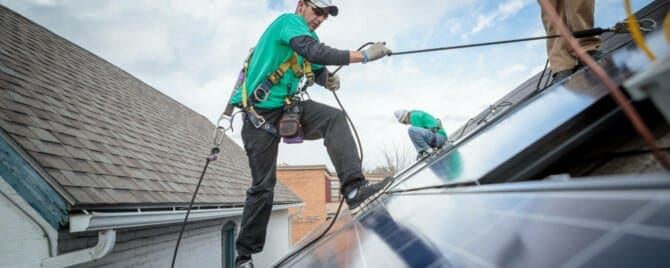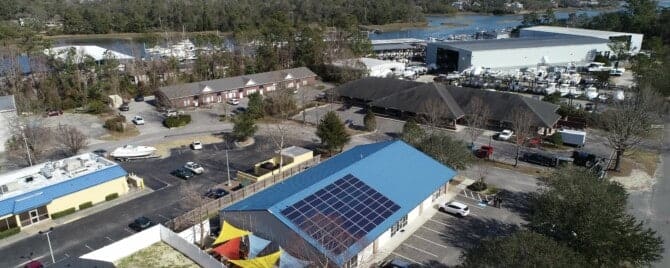Homeowners Make Informed Decisions While Going Solar
WILMINGTON, NC, June 28, 2011 – A homeowner on Figure Eight Island, NC installs solar panels with the highest efficiency and performance available on the US market today. The 4.48 kW photovoltaic solar system consists of 14 SunPower SPR-320E panels and is expected to generate 6255 kWh per year, which will offset 40 percent of the household’s electrical needs.
The high-performance 320-watt solar panel offers the industry’s highest conversion efficiency of 19.5 percent. By using high efficiency solar panels, homeowners are able to produce more power in a smaller footprint than by using standard efficiency panels. Moreover, many of today’s rebates and incentives are based on solar system production, so more efficient panels make more energy for the homeowner, thus, shortening the system payback and providing a higher Return on Investment (ROI).
Nancy ODonohue, the savvy homeowner of the solar system shares her reasoning: “While doing my research of the available solar panel products, I came to the conclusion to invest smartly – to install the highest performing panels that are available to me, as a residential customer. When learning about SunPower modules, I quickly formed my decision, I wanted the best of the best,” ODonohue states firmly. “I wanted to make as much power possible within my roof space available.” Her system will pay for itself in 7.16 years and will provide a first year ROI of 13.96 percent.
With the emergence of electrical vehicles, rooftops are becoming valuable real estate. If a roof is filled with standard efficiency panels, the homeowner cannot make any additions later. SunPower solar panels achieve record panel efficiency approaching 20 percent, the maximum level available in the present residential solar market.
“Homeowners are becoming more and more educated in the field of solar energy and often come to us with concrete expectations and specific demands,” Adam Hasenfus, Technical Sales Representative from Cape Fear Solar Systems, explains the buyers’ behavior in the residential solar market in Southeastern North Carolina. “There certainly has been a shift in the customer’s awareness,” Hasenfus states. “A year or two ago, not many people knew the difference between a solar thermal and a photovoltaic system. Today, homeowners not only know the difference between solar applications, they ask for particular products, they ask for particular system performance, and they expect accurate numbers from the solar installer in order to evaluate financial performance,” Hasenfus adds.
In addition, the available online monitoring system makes it easy for solar system owners: they instantly see how much they are producing and can compare the data with the production forecast provided by the solar installer. Accurate calculations are an aspect that separates qualified installers from the others – something that the market desperately needs and homeowners should demand.



